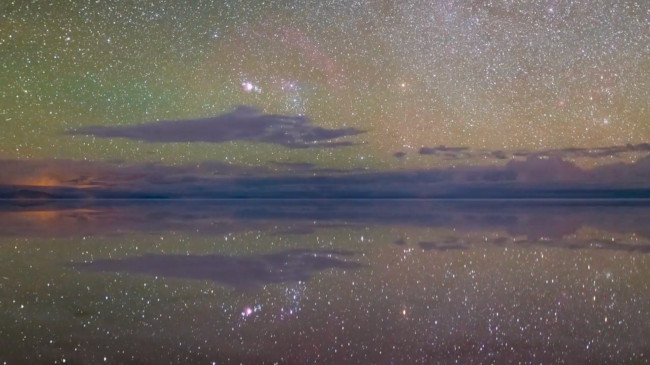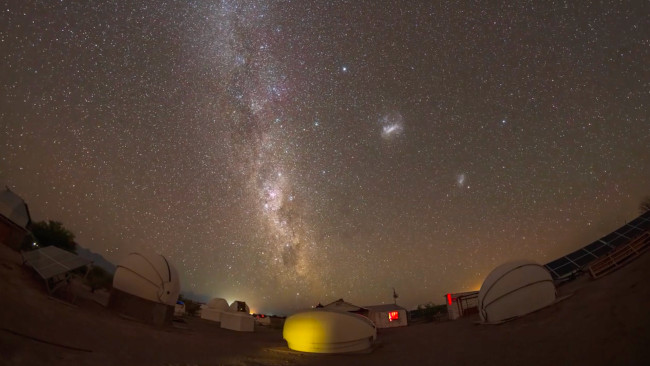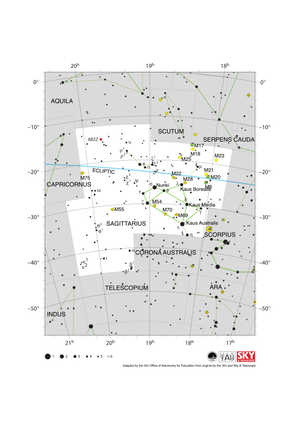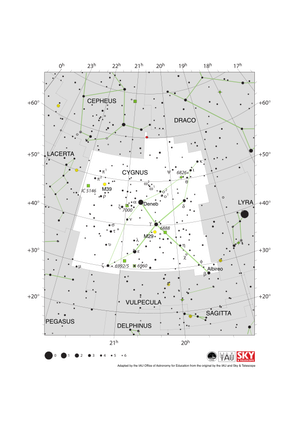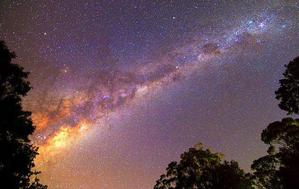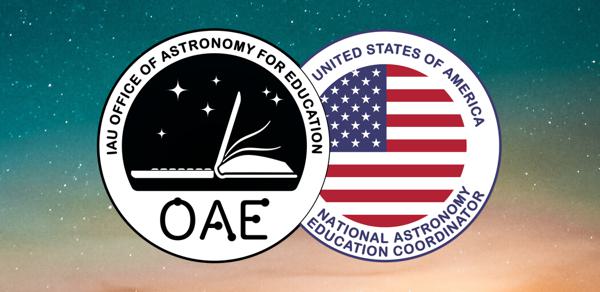Glossary term: Voie lactée
Description: La Voie lactée est la galaxie dans laquelle se trouve le Système solaire. Elle est constituée d'un ensemble d'environ 100 à 400 milliards d'étoiles. Le Système solaire est situé à environ 26 600 années-lumière du centre de la Voie lactée. Dans le ciel nocturne, nous pouvons la voir sous la forme d'une bande peu lumineuse qui s'étend sur le ciel et dont le centre se trouve dans la constellation du Sagittaire.
La Voie lactée est une galaxie spirale barrée relativement grande, dont la distribution des étoiles s'étend jusqu'à environ 100 000 années-lumière le long du disque, avec une épaisseur d'environ 1 000 années-lumière. Le disque galactique s'est formé il y a 8 à 10 milliards d'années.
Ce disque est entouré d'un halo d'étoiles beaucoup plus clairsemé, comprenant des amas d'étoiles globulaires. Ces amas globulaires comptent parmi les objets les plus anciens de la galaxie, avec un âge d'environ 12,5 milliards d'années. Outre les étoiles, la Voie lactée est composée de gaz et de poussières du milieu interstellaire et de matière noire. Alors que le milieu interstellaire se limite principalement au disque, le halo de matière noire qui l'entoure s'étend sur des distances beaucoup plus grandes que le halo stellaire.
Le centre de la Voie lactée abrite un trou noir supermassif dont la masse est environ 4 millions de fois supérieure à celle du Soleil. Autour du centre galactique se trouve un bulbe composé principalement d'étoiles plus anciennes, qui est allongé dans une direction, formant une barre.
Related Terms:
- Matière noire
- Bulbe galactique
- Centre galactique
- Disque galactique
- Halo galactique
- Galaxie
- Greenwich Mean Time Zone (GMT)
- Système solaire
- Milieu interstellaire
- Sagittaire
See this term in other languages
Term and definition status: The original definition of this term in English have been approved by a research astronomer and a teacher The translation of this term and its definition is still awaiting approval
The OAE Multilingual Glossary is a project of the IAU Office of Astronomy for Education (OAE) in collaboration with the IAU Office of Astronomy Outreach (OAO). The terms and definitions were chosen, written and reviewed by a collective effort from the OAE, the OAE Centers and Nodes, the OAE National Astronomy Education Coordinators (NAECs) and other volunteers. You can find a full list of credits here. All glossary terms and their definitions are released under a Creative Commons CC BY-4.0 license and should be credited to "IAU OAE".
If you notice a factual or translation error in this glossary term or definition then please get in touch.
Related Media
Milky Way Arch over Lut Desert, Iran, by Amirreza Kamkar, Iran (Islamic Republic of)
Credit: Amirreza Kamkar/IAU OAE
License: CC-BY-4.0 Creative Commons Attribution 4.0 International (CC BY 4.0) icons
Constellations from the World
Credit: Stephanie Ye Ziyi/IAU OAE
License: CC-BY-4.0 Creative Commons Attribution 4.0 International (CC BY 4.0) icons
Flowing Night Sky
Credit: Robert Barsa/IAU OAE
License: CC-BY-4.0 Creative Commons Attribution 4.0 International (CC BY 4.0) icons
Chilean Nights
Credit: Robert Barsa/IAU OAE
License: CC-BY-4.0 Creative Commons Attribution 4.0 International (CC BY 4.0) icons
Le ciel de l'hémisphère Sud
Credit: Jianfeng Dai/IAU OAE
License: CC-BY-4.0 Creative Commons Attribution 4.0 International (CC BY 4.0) icons
Related Diagrams
Sagittarius Constellation Map
Credit: Adapted by the IAU Office of Astronomy for Education from the original by IAU/Sky & Telescope
License: CC-BY-4.0 Creative Commons Attribution 4.0 International (CC BY 4.0) icons
Cygnus Constellation Map
Credit: Adapted by the IAU Office of Astronomy for Education from the original by the IAU and Sky & Telescope
License: CC-BY-4.0 Creative Commons Attribution 4.0 International (CC BY 4.0) icons
Triangulum Constellation Map
Credit: Adapted by the IAU Office of Astronomy for Education from the original by the IAU and Sky & Telescope
License: CC-BY-4.0 Creative Commons Attribution 4.0 International (CC BY 4.0) icons
Related Activities
Glitter Your Milky Way
astroEDU educational activity (links to astroEDU website) Description: Explore the Milky Way and characteristics of galaxies using glitter drawing.
License: CC-BY-4.0 Creative Commons Attribution 4.0 International (CC BY 4.0) icons
Tags:
Art
, Creativity
, Hands-on
, Handcraft
Age Ranges:
6-8
, 8-10
Education Level:
Middle School
, Primary
Areas of Learning:
Fine Art focussed
Costs:
Medium Cost
Group Size:
Group
Skills:
Communicating information
Living in the Milky Way
astroEDU educational activity (links to astroEDU website) Description: Build a model of the Milky Way to discover what our galaxy contains.
License: CC-BY-4.0 Creative Commons Attribution 4.0 International (CC BY 4.0) icons
Tags:
Hands-on
, Model
Age Ranges:
6-8
, 8-10
Education Level:
Primary
Areas of Learning:
Problem-solving
, Social Research
Costs:
Medium Cost
Duration:
1 hour 30 mins
Group Size:
Group
Skills:
Asking questions
, Communicating information
, Developing and using models

